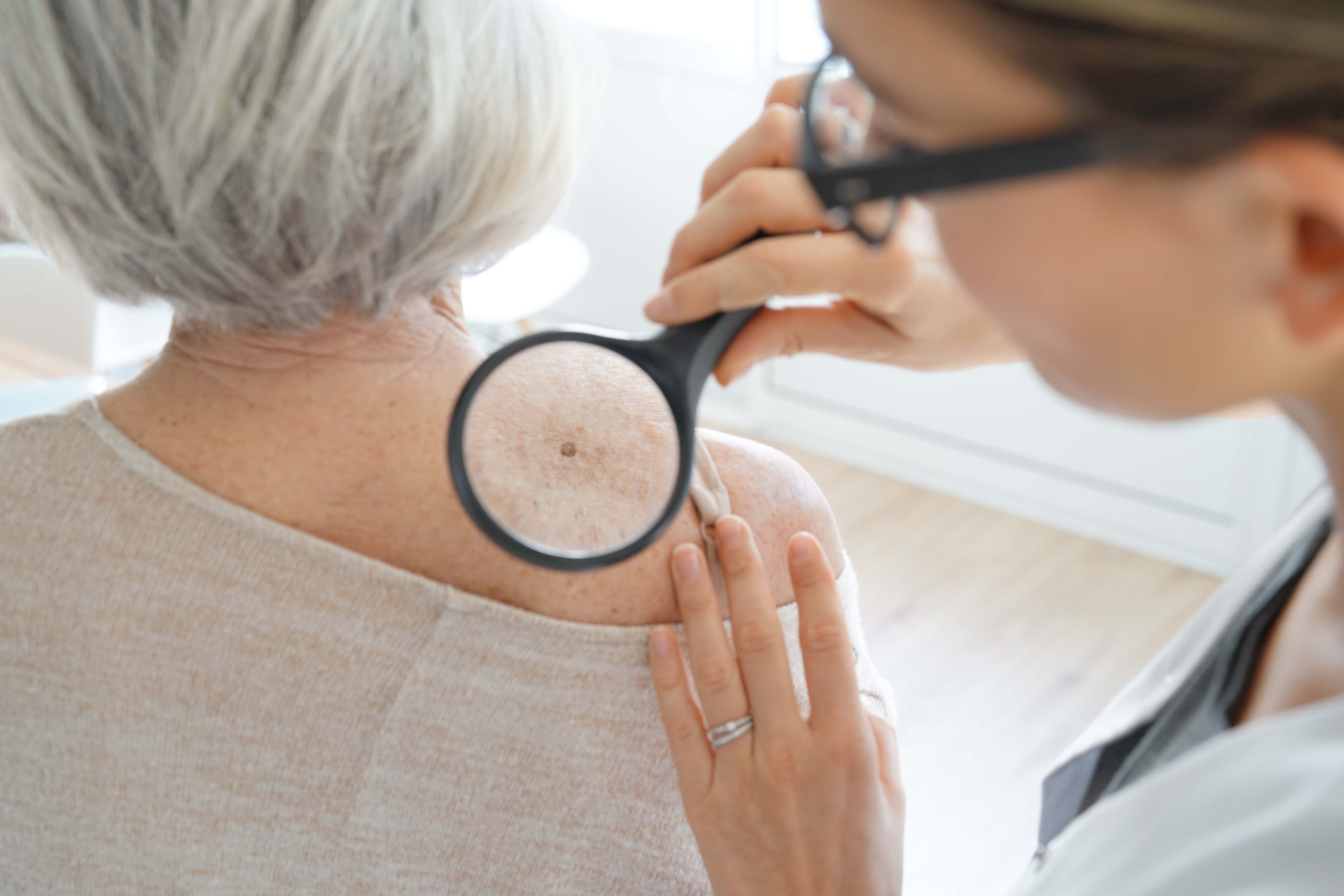- Acne
- Actinic Keratosis
- Aesthetics
- Alopecia
- Atopic Dermatitis
- Buy-and-Bill
- COVID-19
- Case-Based Roundtable
- Chronic Hand Eczema
- Chronic Spontaneous Urticaria
- Drug Watch
- Eczema
- General Dermatology
- Hidradenitis Suppurativa
- Melasma
- NP and PA
- Pediatric Dermatology
- Pigmentary Disorders
- Practice Management
- Precision Medicine and Biologics
- Prurigo Nodularis
- Psoriasis
- Psoriatic Arthritis
- Rare Disease
- Rosacea
- Skin Cancer
- Vitiligo
- Wound Care
Article
COVID-19's Impact on Treating Elderly Patients With Skin Cancer
Author(s):
Researchers said the pandemic played a role in healthcare providers’ ability to safely and promptly treat various skin cancers.
The COVID-19 pandemic played a role in dermatologists’ and other healthcare providers’ ability to safely treat elderly patients with skin cancer affecting their head, face, or neck.
goodluz/AdobeStock

According to a recent study,1 researchers said surgical management of these skin cancers was hindered by the pandemic. In order todetermine the potential impacts and correlations between COVID-19 and safe, prompt skin cancer treatment, researchers conducted a study and retrospective analysis.
“There is a need for skin cancer guidance in relation to COVID-19 that considers elderly patients who are at higher risk of complications from COVID-19 infection,” study authors wrote. “This study identified ways to provide skin cancer care while minimizing the risk of COVID-19 infection.”
Researchers collected data from patients at Barking, Havering, and Redbridge University Hospitals in London, United Kingdom from January 31, 2020, to January 31, 2021. Patients included in the analysis had a confirmed skin cancer diagnosis affecting their head or neck and met the age criteria of 65 years of age or older.
Any patients who were suspected to have cancer, had been biopsied, and found to have non-cancerous lesions, were excluded from analysis participation.
Researchers analyzed each patient for various data points, including:
- Date of referral to date of surgery
- Histological type of cancer and location
- Type of reconstruction performed
- Anesthesia used
- Suture types used
- Outcome
All data points were compared to national guidelines and to similar cohorts of patients who had been treated for skin cancer prior to (January 1, 2018, to May 20, 2018) or after (December 1, 2021, to March 1, 2022) the pandemic.
Within the analysis time frame, researchers collected data from 520 skin cancer cases. These cases included diagnoses of basal cell carcinoma, malignant melanoma, pleomorphic sarcoma, and squamous cell carcinoma. A total of 50 patients were included in the pre-pandemic analysis, and 130 patients were included from the post-pandemic time frame. 340 patients were treated and analyzed amid the pandemic time frame.
Of all patients included in the analysis, the majority of skin cancers were found on the ear (n=47), nose (n=54), and scalp (n=64) regions.
Additionally, researchers collected comparative data to assess the average time from referral to surgery (in days). The overall mean in pre-pandemic patients was 139.2 days. In the pandemic cohort, the mean was 119 days, and in the post-pandemic group, the average was 94.7 days.
Following excision, the majority (52%) of pre-pandemic patients received local flap reconstructive closure. This number dropped to 33.1% during the pandemic. Amid the pandemic, 90.2% of patients achieved complete excision.
In the United Kingdom, physicians target initial non-melanoma skin cancer (NMSC) treatment to begin at 6 weeks from referral. According to study authors, recommendations advocate for treatment to occur within 31 days in cases of NMSC and within 28 days for melanoma treatment.
“In this analysis the average time for basal cell carcinomas was 139.6 days, squamous cell carcinomas 60.6 days and melanomas 60.7 days,” study authors wrote. “Delaying skin cancer treatment increases patient risk of developing further complications, the need for more complex surgery, and the mortality rates. This study highlights the negative impact of COVID-19 on the access for timely intervention of skin cancers.”
Reference
- Borg TM, Eisold J, Miyanjo Y, Pappa E. The effect of Covid‐19 on surgical management of skin cancers of the head, face and neck in elderly patients. Skin Health and Disease. 2023. doi:10.1002/ski2.175
Newsletter
Like what you’re reading? Subscribe to Dermatology Times for weekly updates on therapies, innovations, and real-world practice tips.















